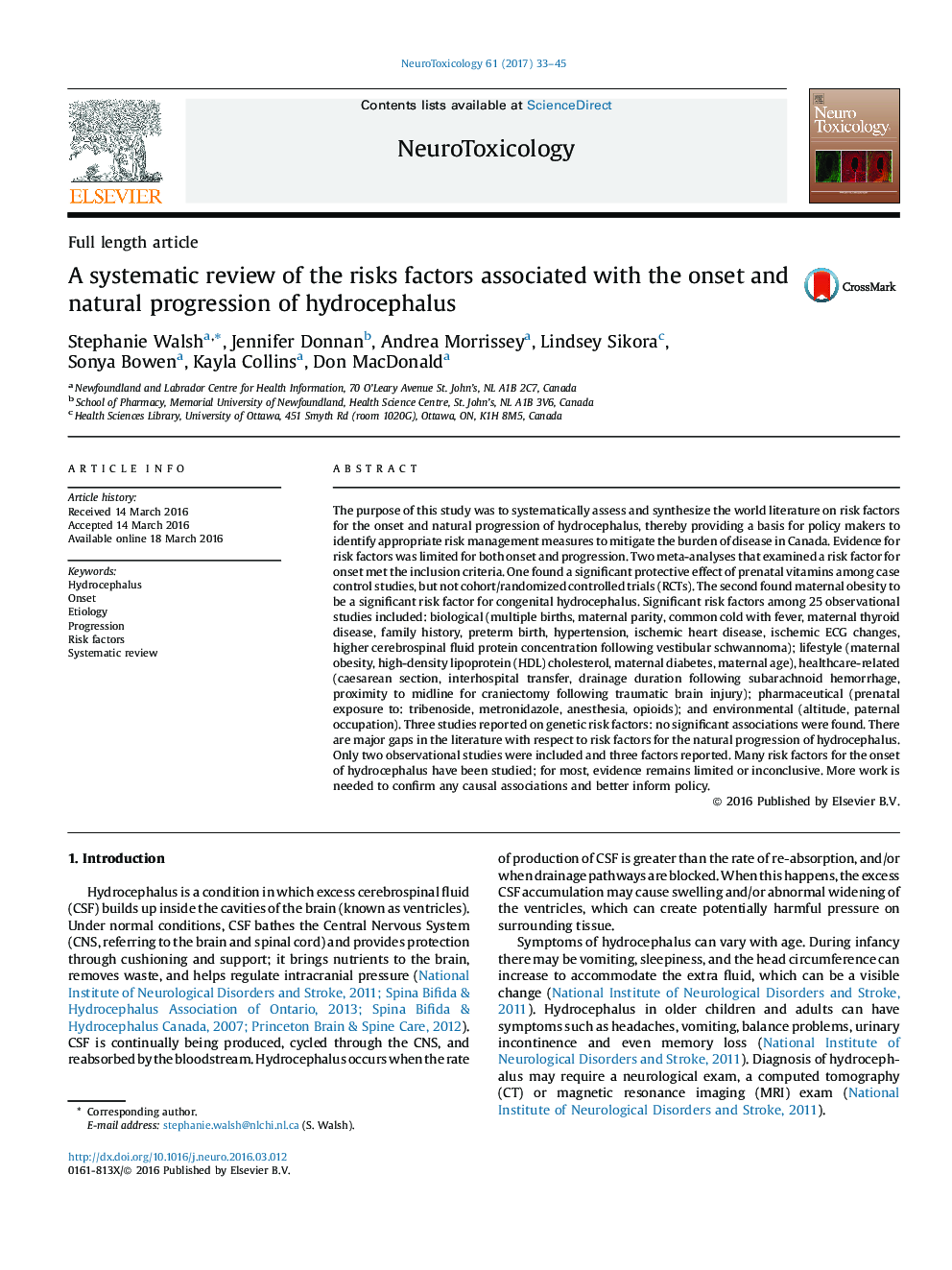| کد مقاله | کد نشریه | سال انتشار | مقاله انگلیسی | نسخه تمام متن |
|---|---|---|---|---|
| 5560904 | 1562033 | 2017 | 13 صفحه PDF | دانلود رایگان |
- With hydrocephalus, excessive accumulation of cerebrospinal fluid (CSF) results in abnormal widening of cavities (ventricles) in the brain, creating potentially harmful pressure on neural tissues.
- Hydrocephalus can be congenital (CHC) (developed prior to birth) or acquired (AHC) (developed during or after birth) and can occur at any age. Incidence of congenital hydrocephalus is estimated at about 3 per 1,000 live births in the US.
- The limited evidence available suggests that both congenital and acquired hydrocephalus may be linked to modifiable risk factors, such as maternal obesity, lack of prenatal multivitamin supplement use, and high HDL cholesterol in adults.
- Health care policy could focus on the following risk mitigation strategies: i) providing and improving access to adequate prenatal education and care, particularly for mothers at greater risk of pre-term delivery (e.g., teens and older primiparous mothers); ii) better counselling for women using artificial reproductive technologies such as in-vitro fertilization and are, thus, at a greater risk of having a multiple birth; and iii) use of safety equipment across a broad range of uses, from infant car seats and seatbelts, to workplace hardhats and harnesses, to sporting and recreation gear (e.g., bicycle helmets), all of which may help to prevent hydrocephalus due to head injuries.
The purpose of this study was to systematically assess and synthesize the world literature on risk factors for the onset and natural progression of hydrocephalus, thereby providing a basis for policy makers to identify appropriate risk management measures to mitigate the burden of disease in Canada. Evidence for risk factors was limited for both onset and progression. Two meta-analyses that examined a risk factor for onset met the inclusion criteria. One found a significant protective effect of prenatal vitamins among case control studies, but not cohort/randomized controlled trials (RCTs). The second found maternal obesity to be a significant risk factor for congenital hydrocephalus. Significant risk factors among 25 observational studies included: biological (multiple births, maternal parity, common cold with fever, maternal thyroid disease, family history, preterm birth, hypertension, ischemic heart disease, ischemic ECG changes, higher cerebrospinal fluid protein concentration following vestibular schwannoma); lifestyle (maternal obesity, high-density lipoprotein (HDL) cholesterol, maternal diabetes, maternal age), healthcare-related (caesarean section, interhospital transfer, drainage duration following subarachnoid hemorrhage, proximity to midline for craniectomy following traumatic brain injury); pharmaceutical (prenatal exposure to: tribenoside, metronidazole, anesthesia, opioids); and environmental (altitude, paternal occupation). Three studies reported on genetic risk factors: no significant associations were found. There are major gaps in the literature with respect to risk factors for the natural progression of hydrocephalus. Only two observational studies were included and three factors reported. Many risk factors for the onset of hydrocephalus have been studied; for most, evidence remains limited or inconclusive. More work is needed to confirm any causal associations and better inform policy.
Journal: NeuroToxicology - Volume 61, July 2017, Pages 33-45
